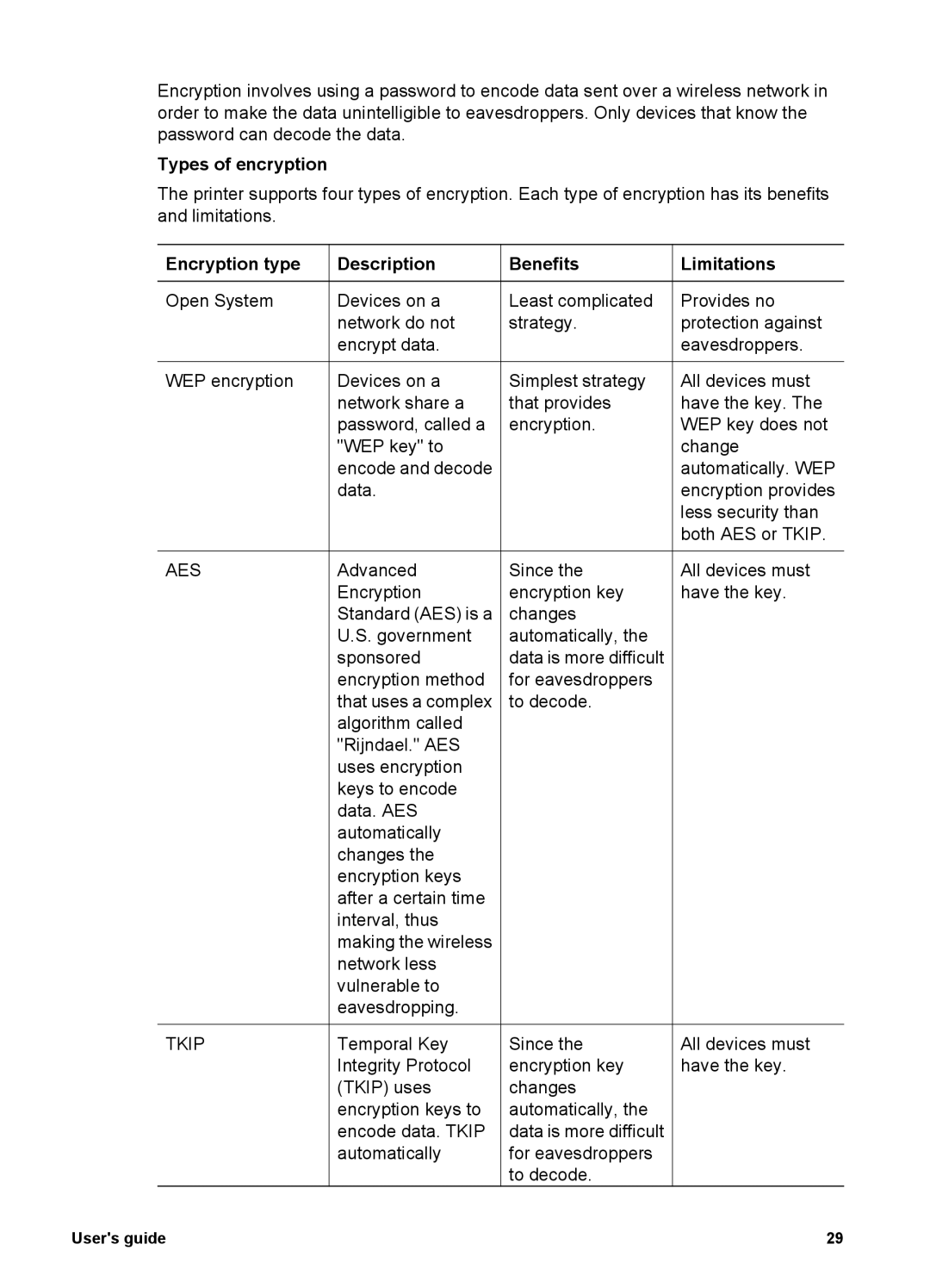
Encryption involves using a password to encode data sent over a wireless network in order to make the data unintelligible to eavesdroppers. Only devices that know the password can decode the data.
Types of encryption
The printer supports four types of encryption. Each type of encryption has its benefits and limitations.
Encryption type
Open System
WEP encryption
AES
TKIP
Description
Devices on a network do not encrypt data.
Devices on a network share a password, called a "WEP key" to encode and decode data.
Advanced
Encryption Standard (AES) is a U.S. government sponsored encryption method that uses a complex algorithm called "Rijndael." AES uses encryption keys to encode data. AES automatically changes the encryption keys after a certain time interval, thus making the wireless network less vulnerable to eavesdropping.
Temporal Key Integrity Protocol (TKIP) uses encryption keys to encode data. TKIP automatically
Benefits
Least complicated strategy.
Simplest strategy that provides encryption.
Since the encryption key changes automatically, the data is more difficult for eavesdroppers to decode.
Since the encryption key changes automatically, the data is more difficult for eavesdroppers to decode.
Limitations
Provides no protection against eavesdroppers.
All devices must have the key. The WEP key does not change automatically. WEP encryption provides less security than both AES or TKIP.
All devices must have the key.
All devices must have the key.
User's guide | 29 |
